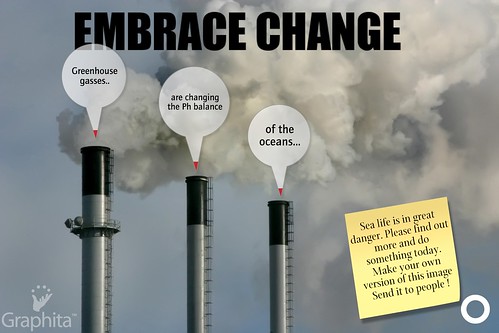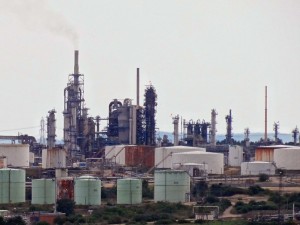 The draw for the lucrative group stages of the Champions League was made on Thursday 28th August. The 32 remaining clubs in the competition were allocated into eight groups of four teams. 74% percent of the respondents to a BBC survey thought that Manchester City had the toughest draw, while only 3.7% thought that Chelsea had the hardest draw. How did the Premier League champions end up in a much tougher group than the teams that finished in 3rd and 4th place? Was it purely by chance?
The draw for the lucrative group stages of the Champions League was made on Thursday 28th August. The 32 remaining clubs in the competition were allocated into eight groups of four teams. 74% percent of the respondents to a BBC survey thought that Manchester City had the toughest draw, while only 3.7% thought that Chelsea had the hardest draw. How did the Premier League champions end up in a much tougher group than the teams that finished in 3rd and 4th place? Was it purely by chance?
The unpredictability of a sporting contest depends not only on differences in the talent/motivation of the participants involved, but also on how the contest is designed and structured. The Champions League is an interesting case. The title of the competition would suggest that the participating clubs are all league champions from the 54 football associations spread across Europe. However, out of the 32 clubs which made it to the group stage, only 18 were actually the champions of their own domestic league.
22 teams automatically qualify for the group stages, while the other ten qualify via a knock-out stage of the competition. Of the 22 teams which gain automatic qualification only thirteen are league champions. The other nine places are allocated to teams which finished either 2nd or 3rd in their domestic leagues.
The inclusion of teams which did not win their domestic league occurs because UEFA allocates places in the Champions League by ranking the sporting performance of the 54 different football associations in Europe. This measure of performance, known as a Country’s Coefficient, is based on the results of the teams from each football association in both the Champions League and Europa League over the previous five years. If UEFA ranks a football association in one of the top three positions, then the teams that finish 1st , 2nd and 3rd in those leagues automatically qualify for the group stage of the Champions League. England is currently ranked in 2nd place behind Spain, which explains why Chelsea, which finished 3rd in the Premier League, obtained automatic qualification. The teams that finished 4th in these three top ranked leagues also gain entry to the final knock-out round of the competition. This is how Arsenal gained qualification for the group stage by narrowly defeating Besiktas from the Turkish League.
Teams from the lower ranked football associations have to win through more knock-out games in order to reach the lucrative group stage. For example the league champions from the bottom six countries (Faroe Islands, Wales, Armenia, Andorra, San Marino and Gibraltar) would have to win through four two-leg knock-out games. The league champions from Scotland would have to win through three as their football association is ranked in 24th place.
A draw takes place in order to allocate the remaining 32 teams to the leagues in the group stages. It is interesting how this allocation occurs because it is not a completely random process. UEFA ranks individual teams as well as countries. Real Madrid is currently ranked in 1st place while Port Talbot Town from the Welsh league is in 449th place. The top eight ranked teams still left in the competition are placed in pot 1, the 9th to 16th ranked clubs are placed in pot 2 and so on. One team from each pot is then drawn out at random and placed in a group. Therefore each group contains one club from pot 1, 1 club from pot 2, 1 club from pot 3 and 1 from pot 4.
The problem for Manchester City is that the seeding of each team is predominately determined by its performance in the Champions and Europa league over the previous five years. Once a team has made it to the group stages, its performance in its own domestic league has no impact on how it is seeded. This means that although Arsenal only finished 4th in the Premier League, it is placed in pot 1 for the draw because of its results in the Champions League over the previous five years. It therefore avoids the other top seeded clubs such as Real Madrid, Barcelona and Bayern Munich. Chelsea is also in pot 1, so was also more likely to get a favourable draw. Manchester City was seeded in pot 2 because it had only been in the Champions League for the last three years, so had not accumulated as many points as the teams who have been in the competition for longer.
Unfortunately for Manchester City, it was drawn in the same group as one of the strongest pot 1 teams – Bayern Munich. It was also unlucky to end up with one of the strongest teams in pot 4. Roma was runners up in the Italian league so was given an automatic place in the group stage. However it received a relatively low seeding as it is the first time it has been in the Champions league since 2010–11.
How much does the seeding matter? Since 1999–2000, when the group stage was expanded to 32 clubs, 86% of the top seeded teams have successfully qualified from the group stage into the last 16. Eleven of the last 16 winners were also from pot 1.
Articles
UEFA Rankings – Club coefficients 2014/15 UEFA (29/8/14)
UEFA Rankings – Country coefficients 2014/15 UEFA (29/8/14)
UEFA Rankings – Coefficients Overview UEFA (29/8/14)
Explained: The UEFA Champions League draw The Indian Empress (28/8/14)
Questions
- Uefa awards ranking points to teams based on their sporting performance. For example teams receive two ranking points for a victory against any team. This is different from the system used to rank national teams where the quality of the team defeated also influences the number of points awarded. What impact would it have if more ranking points were awarded in the Champions League for victories against higher ranked clubs?
- The Uefa system for ranking countries and teams is based on performance in European competitions over the previous 5 years. The performance in each year is weighted equally. What impact might it have if victories from the previous year were more heavily weighted than those from 4 or 5 years ago?
- The draw for the group stages of the Champions League could be made using a completely random process without any seeding. What impact might this have on the amount of money that firms in England, Spain and Italy would be willing to pay to secure the media rights?
- Can you think of any other elements of the design of the tournament that might have an impact on the predictability of the outcome?
 There are a number of surveys that attempt to measure the spending intentions of people in the run up towards Christmas. For example a recent study carried out by YouGov found that people in the UK planned to spend an average of £599 on presents for their family and friends. This represented a 5.8% increase on the previous year. Planned total spending on Christmas was estimated to be a staggering £22 billion.
There are a number of surveys that attempt to measure the spending intentions of people in the run up towards Christmas. For example a recent study carried out by YouGov found that people in the UK planned to spend an average of £599 on presents for their family and friends. This represented a 5.8% increase on the previous year. Planned total spending on Christmas was estimated to be a staggering £22 billion.
 Respondents to another survey, carried out by the hotel chain Travelodge, stated that on average they planned to buy presents for 12 people. This study also found that the average expected spend on each present was £28.70 – an increase of £1.70 on the previous year. A rather obvious question for anyone interested in economics is whether this is either a sensible or an efficient way of allocating resources. One way to think about how an economist might approach this issue is to ask yourself the following questions after you have opened a present on Christmas day.
Respondents to another survey, carried out by the hotel chain Travelodge, stated that on average they planned to buy presents for 12 people. This study also found that the average expected spend on each present was £28.70 – an increase of £1.70 on the previous year. A rather obvious question for anyone interested in economics is whether this is either a sensible or an efficient way of allocating resources. One way to think about how an economist might approach this issue is to ask yourself the following questions after you have opened a present on Christmas day.
• How much money do you think the person who gave you the present paid for it?
• Ignoring the sentimental value, if you had not received this present how much would
you be willing to pay to purchase it?
Exactly 20 years ago the economist Joel Waldfogel posed questions very similar to these to a group of 86 students studying an intermediate microeconomics module at Yale University in the USA. On average the respondents to the questions estimated that friends and family had spent $438 on  the gifts they had received that Christmas. Unfortunately their willingness to pay for these same gifts was $313 on average. Economists would argue that this is an example of economic inefficiency because the recipients’ valuation of the gifts – as measured by their willingness to pay – was only 71.5% of the price paid by the person who gave them the presents. This means that it is possible to make the person who received the gift better off without making the person who purchased the gift any worse off. This argument can be illustrated with a simple example.
the gifts they had received that Christmas. Unfortunately their willingness to pay for these same gifts was $313 on average. Economists would argue that this is an example of economic inefficiency because the recipients’ valuation of the gifts – as measured by their willingness to pay – was only 71.5% of the price paid by the person who gave them the presents. This means that it is possible to make the person who received the gift better off without making the person who purchased the gift any worse off. This argument can be illustrated with a simple example.
Assume you have purchased a Liverpool football club shirt as a present for Sir Alex Ferguson and it cost you £50! Rather surprisingly Sir Alex likes the shirt but would have only been willing to pay £20 if he was buying it for himself. Imagine now that you have given him £50 cash instead of the shirt. This would not make you any worse off – your cash outlay would remain unchanged. However, Sir Alex would now be able to spend the £50 cash in a way which would give him far more satisfaction than the Liverpool football shirt would have given him. Sir Alex can therefore be made better off without making you worse off. The present in this example generates a deadweight welfare loss of £30. Waldfogel concluded from his later research based on a larger sample of people that, on average, people’s valuations of their presents is about 90% of the money actually spent on them. If this figure is accurate, it suggests that over £2 billion will be wasted in the UK this Christmas.
The size of the deadweight welfare loss depends on how well the person who is buying the present knows or understands the preferences of the recipient. The closeness of age, friendship or family relationship are all likely to influence the accuracy of this knowledge. Interestingly, Waldfogel found that presents from grandparents to grandchildren were the most inefficient: i.e. the difference between the recipient’s valuation of the gift and the price paid for the present was the greatest. The study also found that grandparents were more likely to give their grandchildren cash gifts.
 Do economists always advise people to give cash as presents? Thankfully the dismal science can find some positive things to say about giving gifts. The previous analysis can be criticised in a number of different ways. It assumes that the recipients are perfectly informed about all the potential gifts that are available. If the person buying the present can find an item that the recipient was unaware of, then it is possible that economic welfare might be increased. It has also been assumed that the pleasure or value people obtain from an item is not influenced by who has purchased it. It may be the case that people place a greater value on an item when it is a gift from somebody else. In the previous example, perhaps Sir Alex would value the Liverpool shirt at £60 if you had purchased it for him as a present. The analysis has also ignored the possibility that the person buying the present derives pleasure from trying to find a gift that they think the person would like. Perhaps people feel a ‘warm glow’ when they see the happiness of somebody opening their present on Christmas day.
Do economists always advise people to give cash as presents? Thankfully the dismal science can find some positive things to say about giving gifts. The previous analysis can be criticised in a number of different ways. It assumes that the recipients are perfectly informed about all the potential gifts that are available. If the person buying the present can find an item that the recipient was unaware of, then it is possible that economic welfare might be increased. It has also been assumed that the pleasure or value people obtain from an item is not influenced by who has purchased it. It may be the case that people place a greater value on an item when it is a gift from somebody else. In the previous example, perhaps Sir Alex would value the Liverpool shirt at £60 if you had purchased it for him as a present. The analysis has also ignored the possibility that the person buying the present derives pleasure from trying to find a gift that they think the person would like. Perhaps people feel a ‘warm glow’ when they see the happiness of somebody opening their present on Christmas day.
 A final interesting economic explanation for buying presents is that they might act as an effective signal in a situation where there is asymmetric information. It can be argued that this is the case in relationships where people have private information about their true feelings towards one another. One way of communicating these feelings is by simply telling someone how you feel about them. However, this might not be an effective signal, as someone who does not have such strong feelings could say the same things as someone who does! However, by taking the time and trouble to buy someone a present that they really like, you are able to signal more effectively how you really feel about them. The signal can be particularly strong if the person buying the present really dislikes shopping. Just giving someone cash, or not taking the time to buy a present the person really likes, might signal that you simply could not be bothered to exert the effort because your feelings are not that strong. The potential consequences of giving your partner money are amusingly demonstrated in the following clip: The Economics of Seinfeld: What’s the right Gift to give; cash?
A final interesting economic explanation for buying presents is that they might act as an effective signal in a situation where there is asymmetric information. It can be argued that this is the case in relationships where people have private information about their true feelings towards one another. One way of communicating these feelings is by simply telling someone how you feel about them. However, this might not be an effective signal, as someone who does not have such strong feelings could say the same things as someone who does! However, by taking the time and trouble to buy someone a present that they really like, you are able to signal more effectively how you really feel about them. The signal can be particularly strong if the person buying the present really dislikes shopping. Just giving someone cash, or not taking the time to buy a present the person really likes, might signal that you simply could not be bothered to exert the effort because your feelings are not that strong. The potential consequences of giving your partner money are amusingly demonstrated in the following clip: The Economics of Seinfeld: What’s the right Gift to give; cash?
Perhaps giving presents instead of cash is an economically efficient way of dealing with situations where asymmetric information is potentially an important issue.
Articles
British households plan to spend £820 on Christmas YouGov (11/11/13)
Brits ‘to spend more on Christmas presents this year with average gift costing £28.70’ Daily Mirror (13/11/13)
Christmas shoppers hit the sales in biggest spending spree since the recession began Daily Express (15/12/13)
Bah, Humbug The Joy of Economics: Making Sense out of Life, Robert J. Stonebraker (22/05/13)
What many economists don’t understand about Christmas Quartz, Tim Fernholz (19/12/13)
The Economics of Gifts Greg Mankiw’s Blog (24/12/06)
The case against Christmas presents The Guardian (19/12/13)
Grinchonomics or how the Economist stole Christmas Economics in Plain English (16/12/10)
The true value of the 12 days of Christmas reveals giving cash may be the most cost-effective gift Perth Now, Jessica Irvine (21/12/13)
Questions
- Explain what is meant by the term ‘allocative efficiency’. Use a diagram to help illustrate and explain your answer.
- Draw an indifference curve diagram to illustrate the potential welfare costs of giving presents instead of cash.
- Assess whether giving someone a gift card is more economically efficient than giving them a present.
- Using a simple numerical example, explain how economic welfare could be higher if someone buys a present that the recipient was unaware of. What factors might you have to take into account when carrying out this economic analysis?
- Explain what is meant by the term ‘asymmetric information’. Provide a number of examples to help illustrate your answer.
- What properties must a signal have if it is to successfully overcome problems caused by asymmetric information?
 In market capitalism, the stock of manufactured capital provides a flow of output. The profitability of the use of that capital depends on the cost of investing in that capital and the cost of using it, and on the flow of revenues from that capital. Discounted cash flow techniques can be used to assess the profitability of a given investment in capital; the flows of costs and revenues are discounted at a market discount rate to give a net present value (NPV). If the NPV is positive (discounted revenues exceed discounted costs), the investment is profitable; if it is negative, the investment is unprofitable. (See Economics, 8th edition, section 9.3.)
In market capitalism, the stock of manufactured capital provides a flow of output. The profitability of the use of that capital depends on the cost of investing in that capital and the cost of using it, and on the flow of revenues from that capital. Discounted cash flow techniques can be used to assess the profitability of a given investment in capital; the flows of costs and revenues are discounted at a market discount rate to give a net present value (NPV). If the NPV is positive (discounted revenues exceed discounted costs), the investment is profitable; if it is negative, the investment is unprofitable. (See Economics, 8th edition, section 9.3.)
There may be market imperfections in the allocation of investment, in terms of distorted prices and interest rates. These may be the result of market power, asymmetry of information, etc., but in many cases the market allows capital investment to be allocated relatively efficiently.
Natural capital
This is not the case with ‘natural capital’. Natural capital (see also) is the stock of natural resources and ecosystems that, like manufactured capital, yields a flow of goods and services into the future.  Natural capital, whilst it can be improved or degraded by human action, is available without investment. Thus the natural capital of the oceans yields fish, the natural capital of the skies yields rain and the natural capital of forests reduces atmospheric CO2.
Natural capital, whilst it can be improved or degraded by human action, is available without investment. Thus the natural capital of the oceans yields fish, the natural capital of the skies yields rain and the natural capital of forests reduces atmospheric CO2.
Even though some natural capital is owned (e.g. private land), much is a common resource. As such, it is free to use and tends to get overused. This is the Tragedy of the Commons – see, for example, the following news items: A modern tragedy of the commons and Is there something fishy going on?.
Natural capital accounting
But would it be possible to give a value to both the stock of natural capital and the goods and services provided by it? Would this environmental accounting enable governments to tax or subsidise firms and individuals for their use or enhancement of natural capital?
On 21 and 22 November 2013, the first World Forum on Natural Capital took place in Edinburgh. This brought together business leaders, politicians, economists, environmentalists and other scientists to discuss practical ways of taking natural capital into account in decision making. Central to the forum was a discussion of ways of valuing natural capital, or ‘natural capital accounting’. As the forum site states:
Natural capital accounting is a rapidly evolving new way of thinking about how we value the economic benefits we derive from our natural environment. The World Forum on Natural Capital will bring together world-class speakers, cutting edge case studies and senior decision makers from different sectors, in order to turn the debate into practical action.

But if natural capital is not owned, how is it to be priced? How will the costs and benefits of its use be valued? How will inter-generational effects be taken into account? Will firms price natural capital voluntarily if doing so reduces their profits? Will firms willingly extend corporate social responsibility to include corporate environmental responsibility? Will governments be prepared to introduce taxes and subsidies to internalise the costs of using natural capital, even if the effects extend beyond a country’s borders? Will natural capital accounting measure purely the effects on humans or will broader questions of maintaining and protecting environmental diversity for its own sake be taken into account? These are big questions and ones that various organisations are beginning to address.
Despite problems of measurement and incentives, sometimes there are clear economic benefits from careful evaluation and management of natural capital. Julia Marton-Lefèvre is Director General of the International Union for Conservation of Nature (IUCN). According to the first Guardian article below:
Her favourite example of natural capital working in practice comes from Vietnam, where “planting and protecting nearly 12,000 hectares of mangroves cost just more than $1m but saved annual expenditures on dyke maintenance of well over $7m. And that only accounts for coast maintenance: mangroves are also nurseries for fish, meaning livelihoods for fishing and source of nutrients … “
One organisation attempting to value natural capital is The Economics of Ecosystems and Biodiversity project (TEEB). It also looks at what organisational changes are likely to be necessary for the management of natural capital.
Based on data collected from 26 early adopter companies (60% of them with $10 Billion+ revenues each) across several industry sectors this provides real life evidence on the drivers and barriers for natural capital management.
 Pricing the environment is a highly controversial issue. Critics claim that the process can easily be manipulated to serve the short-term interests of business and governments. What is more, where tradable permits markets have been set up, such as the EU’s Emissions Trading Scheme (ETS), prices have often been a poor reflection of social costs and have been open to manipulation. As Nick Dearden, director of the World Development Movement (WDM), says:
Pricing the environment is a highly controversial issue. Critics claim that the process can easily be manipulated to serve the short-term interests of business and governments. What is more, where tradable permits markets have been set up, such as the EU’s Emissions Trading Scheme (ETS), prices have often been a poor reflection of social costs and have been open to manipulation. As Nick Dearden, director of the World Development Movement (WDM), says:
It is deeply ironic that the same financial markets that caused the economic crisis are now seen as the solution to our environmental crisis. It’s about time we learnt that financial markets need to be reined in, not expanded. Pricing these common resources on which people depend for their survival leaves all of us more exposed to the forces of the global economy, and decisions about whether or not to protect them become a matter of accounting.
The measurement of natural capital and setting up systems to internalise the costs and benefits of using natural capital is both complex and a political minefield – as the following articles show.
Articles
Putting a value on nature: Edinburgh conference says business is ‘part of the solution’ Blue & Green Tomorrow, Nicky Stubbs (20/11/13)
Edinburgh forum says putting value on nature could save it BBC News, Claire Marshall (20/11/13)
Natural capital must be the way forward, says IUCN director general The Guardian, Tim Smedley (11/11/13)
Is ‘natural capital’ the next generation of corporate social responsibility? The Guardian, Tim Smedley (7/11/13)
Natural capital accounting: what’s all the fuss about? The Guardian, Alan McGill (27/9/13)
Put nature at the heart of economic and social policymaking The Guardian, Aniol Esteban (1/3/13)
Campaigners warn of dangers of ‘privatised nature’ The Scotsman, Ilona Amos (21/11/13)
Edinburgh conference attempts to ‘privatise nature’ World Development Movement, Miriam Ross (18/11/13)
 Valuing Nature BBC Shared Planet, Monty Don (8/7/13)
Valuing Nature BBC Shared Planet, Monty Don (8/7/13)
Sites concerned with natural capital
World Forum on Natural Capital
TEEB for Business Coalition
International Union for Conservation of Nature
Questions
- How would you define natural capital?
- What are ecosystem services?
- Is social efficiency the best criterion for evaluating the use of the environment? What other criteria could you use?
- How would you set about deciding what rate of discount to use when evaluating the depletion of or enhancement of natural capital?
- How can game theory provide insights into the strategies of both businesses and governments towards the environment?
- What are the arguments for and against attempting to value natural capital and to incorporate these values in decision making?
 A constant feature of the UK economy (and of many other Western economies) has been record low interest rates. Since March 2009, Bank Rate has stood at 0.5%. Interest rates have traditionally been used to keep inflation on target, but more recently their objective has been to stimulate growth. However, have these low interest rates had a negative effect on the business environment?
A constant feature of the UK economy (and of many other Western economies) has been record low interest rates. Since March 2009, Bank Rate has stood at 0.5%. Interest rates have traditionally been used to keep inflation on target, but more recently their objective has been to stimulate growth. However, have these low interest rates had a negative effect on the business environment?
Interest rates are a powerful tool of monetary policy and by affecting many of the components of aggregate demand, economic growth can be stimulated. This low-interest rate environment is an effective tool to stimulate consumer spending, as it keeps borrowing costs low and in particular can keep mortgage repayments down. However, this policy has been criticised for the harm it has been doing to savers – after all, money in the bank will not earn an individual any money with interest rates at 0.5%! Furthermore, there is now a concern that such low interest rates have led to ‘zombie companies’ and they are restricting the growth potential and recovery of the economy.
A report by the Adam Smith Institute suggests that these ‘zombie companies’ have emerged in part by the low-interest environment and are continuing to absorb resources, which could otherwise be re-allocated to companies with more potential, productivity and a greater contribution to the economic recovery. During a recession, there will undoubtedly be many business closures, as aggregate demand falls, sales and profits decline until eventually the business becomes unviable and loans cannot be repaid. Given the depth and duration of the recent recessionary period, the number of business closures should have been very large. However, the total number appears to be relatively low – around 2% or 100,000 and the report suggests that the low interest rates have helped to ‘protect’ them.
Low interest rates have enabled businesses to meet their debt repayments more easily and with some banks being unwilling to admit to ‘bad loans’, businesses have benefited from loans being extended or ‘rolled over’. This has enabled them to survive for longer and as the report suggests, may be preventing a full recovery. The report’s author, Tom Papworth said:
Low interest rates and bank forbearance represent a vast and badly targeted attempt to avoid dealing with the recession. Rather than solving our current crisis, they risk dooming the UK to a decade of stagnation … We tend to see zombies as slow-moving and faintly laughable works of fiction. Economically, zombies are quite real and hugely damaging, and governments and entrepreneurs cannot simply walk away.
The problem they create is that resources are invested into these companies – labour, capital, innovation. This creates an opportunity cost – the resources may be more productive if invested into new companies, with greater productive potential. The criticism is that the competitiveness of the economy is being undermined by the continued presence of such companies and that this in turn is holding the UK economy back. Perhaps the interest rate rise that may happen this time next year may be what is needed to encourage the re-allocation of capital. However, a 0.5 percentage point rise in interest rates would hardly be the end of the world for some of these companies. Perhaps a more focused approach looking at restructuring is the key to their survival and the allocation of resources to their most productive use. The following articles and the report itself consider the case of the trading dead.
Report
The Trading Dead The Adam Smith Institute, Tom Papworth November 2013
Articles
Zombie firms threaten UK’s economic recovery, says thinktank The Guardian, Gyyn Topam (18/11/13)
 Zombie companies ‘probably have no long term future’ BBC News (18/11/13)
Zombie companies ‘probably have no long term future’ BBC News (18/11/13)
Rate rise set to put stake through heart of zombie companies Financial Times, Brian Groom (14/11/13)
Why we can still save the zombie firms hindering the UK economic rival City A.M., Henry Jackson (18/11/13)
Breathing new life into zombies The Telegraph, Rachel Bridge (9/11/13)
Questions
- Which components of aggregate demand are affected (and how) by low interest rates?
- Why do low interest rates offer ‘protection’ to vulnerable businesses?
- How is the reallocation of resources relevant in the case of zombie companies?
- If interest rates were to increase, how would this affect the debts of vulnerable businesses? Would a small rate irse be sufficient and effective?
- What suggestions does the report give for zombie companies to survive and become more productive?
- Is there evidence of zombie companies in other parts of the world?
 No market is perfect and when the market mechanism fails to deliver an efficient allocation of resources, we say the market fails and hence there is justification for some government intervention. From a monopolist dominating an industry to a manufacturing firm pumping out pollution, there are countless examples of market failure.
No market is perfect and when the market mechanism fails to deliver an efficient allocation of resources, we say the market fails and hence there is justification for some government intervention. From a monopolist dominating an industry to a manufacturing firm pumping out pollution, there are countless examples of market failure.
The Guardian is creating a guide to climate change, covering areas from politics to economics. The problem of climate change has been well documented and this blog considers a particular issue – the case for climate change or the environment as a market failure. In many cases just one market failure can be identified, for example an externality or a missing market. However, one of the key problems with climate change is that there are several market failures: externalities in the form of pollution from greenhouse gases; poor information; minimal incentives; the problem of the environment as a common resource and the immobility of factors of production, to name a few. Each contributes towards a misallocation of resources and prevents the welfare of society from being maximised.
 When a market fails, intervention is justified and economists argue for a variety of policies to tackle the above failures. In a first-best world, there is only one market failure to tackle, but in the case of the environment, policy must be designed carefully to take into account the fact that there are numerous failings of the free market. Second-best solutions are needed. Furthermore, as the problem of climate change will be felt by everyone, whether in a developed or a developing country, international attention is needed. The two articles below are part of the Guardian’s ultimate climate change guide and consider a huge range of economic issues relating to the problem of environmental market failure.
When a market fails, intervention is justified and economists argue for a variety of policies to tackle the above failures. In a first-best world, there is only one market failure to tackle, but in the case of the environment, policy must be designed carefully to take into account the fact that there are numerous failings of the free market. Second-best solutions are needed. Furthermore, as the problem of climate change will be felt by everyone, whether in a developed or a developing country, international attention is needed. The two articles below are part of the Guardian’s ultimate climate change guide and consider a huge range of economic issues relating to the problem of environmental market failure.
Why do economists describe climate change as a ‘market failure’? Guardian, Grantham Research Institute and Dunca Clark (21/5/12)
What is the economic cost of climate change? Guardian (16/2/11)
Questions
- What is meant by market failure?
- What are the market failures associated with the environment and climate change? In each case, explain how the issue causes an inefficient allocation of resources and thus causes the market to fail? You may find diagrams useful!
- What is meant by the first-best and second-best world?
- What does a second-best solution aim to do?
- Using diagrams to help your explanation, show how a tax on pollution will have an effect in a first best world, where the only market failure is a negative externality and in a second best world, where the firm in question is also a monopolist.
- What solutions are there to the problem of climate change? How effective are they likely to be?
- Does the need to tackle climate change require international co-operation? Can you use game theory to help your explanation?!
 The draw for the lucrative group stages of the Champions League was made on Thursday 28th August. The 32 remaining clubs in the competition were allocated into eight groups of four teams. 74% percent of the respondents to a BBC survey thought that Manchester City had the toughest draw, while only 3.7% thought that Chelsea had the hardest draw. How did the Premier League champions end up in a much tougher group than the teams that finished in 3rd and 4th place? Was it purely by chance?
The draw for the lucrative group stages of the Champions League was made on Thursday 28th August. The 32 remaining clubs in the competition were allocated into eight groups of four teams. 74% percent of the respondents to a BBC survey thought that Manchester City had the toughest draw, while only 3.7% thought that Chelsea had the hardest draw. How did the Premier League champions end up in a much tougher group than the teams that finished in 3rd and 4th place? Was it purely by chance?











